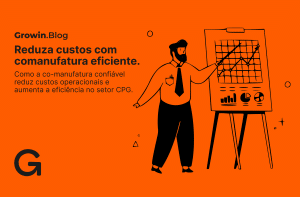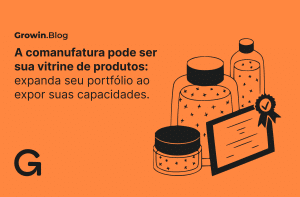In the CPG industry, margins are tight and there is a high level of price volatility, so any competitive advantage brings great results in the launch and success of the product.
Topco Associates LLC, one of the largest consortium buying groups in the US, stands out for using this strategy for sustainable products. Responding to the growing interest in ecological options, the company formed a consortium to buy sustainable food packaging. This initiative allows smaller chains to access biodegradable and recyclable packaging at reduced costs, facilitating the transition to more sustainable practices — something previously financially unfeasible for independent supermarkets.
In this article, we’ll explore how consortium buying can transform the CPG sector, saving money and strengthening relationships with suppliers – and how your company can successfully adopt this practice.
What is consortium buying?
Consortium buying is when a group of companies work together to pool their capacities and jointly buy their services, products and ingredients. It’s as if you went into a store and the sales assistant offered you a special deal because you and your friend were buying the same product together.
This purchasing model is the secret sauce behind the most innovative and cost-effective CPG brands. Procurement teams are using the collaborative model to get ahead in the market. Let’s analyze how procurement teams can use it to their advantage.
A recent example comes from the pharmaceutical industry. Because small companies were facing recurring increases in inputs and competitors, they decided to adopt consortium buying for the purchase of raw materials such as excipients and packaging. So instead of each company negotiating individually with suppliers, they joined together to form a consortium, increasing their purchasing power to the equivalent of a multinational. The results? Significant cost savings, greater price predictability and more advantageous conditions with long-term contracts.
For the CPG industry, the impact can be even greater, considering the volume and diversity of inputs required. From food and beverage ingredients to packaging materials and chemical components, everything can be negotiated together to maximize advantages. And it is precisely this logic — that of “joining forces” — that allows smaller companies to position themselves more competitively in the market, eliminating barriers previously restricted to the big players.Okay, so how can this practice benefit procurement teams? Let’s see.
Benefits on consortium buying
Economies on scale
Just as buying in bulk reduces unit costs, participating in a purchasing consortium increases negotiation power, leading to more favorable terms. This model enables small and medium-sized companies to access prices previously reserved for large corporations.
Imagine that your company manufactures snacks and needs a large quantity of plastic packaging. By entering into a consortium with other CPG companies that also need this item, you negotiate a much larger total volume, guaranteeing a reduction in unit costs. This generates significant savings, especially in times of crisis, when every penny saved counts.
Risk mitigation
Consortium buying is not limited to price negotiations. It also helps to diversify the supplier base, reducing risks.When several companies come together to negotiate, they have the opportunity to secure multiple suppliers for the same input, which minimizes the risk of disruption in the supply chain.
In the CPG sector, where speed to market is essential, the risk of one supplier failing to deliver is high and expensive. Participating in a consortium with other manufacturers in the sector can ensure not only better prices, but also a guarantee of supply, which gives procurement more flexibility and security to deal with volatility.
Access to resources and shared knowledge
Participating in a consortium is a valuable learning experience. By collaborating with other companies, procurement teams tap into a rich network of knowledge and resources. This collaboration facilitates the sharing of best practices and market insights, leading to further optimization of the purchasing process. Over time, this exposure empowers procurement teams to make more strategic and well-informed decisions.
A compelling example emerges from the food sector, where several small organic and health-focused food companies formed a consortium to negotiate specific ingredients like quinoa and almonds. Beyond securing better prices, these companies exchanged valuable insights on sustainable cultivation practices, supplier relationships, and consumer trends. This collaborative learning proved just as valuable as the financial savings, ultimately reinforcing the sustainable positioning of all participating companies.
How to get started?
Despite the benefits, consortium buying requires good planning. It’s not enough to bring companies together and place an order together; there are logistical, contractual and even cultural factors to consider. For consortium buying to be successful, procurement teams need to:
- Choose strategic partners: Find companies with similar needs and an aligned market vision. The consortium thrives when all participants commit to shared guidelines and objectives.
- Establish key points: Define responsibilities and rights within the consortium clearly. Create unambiguous contracts that stipulate conditions for all parties, preventing conflicts and ensuring equal access to benefits.
- Prioritize transparency: Consortium buying demands openness among participating companies. Share expectations and relevant data to enable cohesive, well-informed negotiations that benefit everyone involved.
In practice, large CPG companies that already use consortium buying tend to include specific clauses in their contracts, ensuring that the consortium operates in a fair and balanced manner. This approach prevents conflicts and maintains the integrity of the partnership over time.
How GrowinCo. can be an ally in consortium buying
For companies wishing to adopt consortium buying, GrowinCo. can help. With our experience in co-manufacturing and advanced procurement practices, we facilitate consortium buying, an approach that maximizes the benefits for each participant without compromising their identity or specific needs.
Annual ingredients calendar: By 2025, GrowinCo. will be organizing buying consortia for several key ingredients, and first on the list is citric acid – a critical input for companies in the food and beverage, cleaning products, and other segments.
We are currently gathering companies interested in this consortium group, and there is still time to join. If you would like to know more about the next ingredients on our annual calendar, you can contact us to understand the full planning and assess how your company can benefit.
Join consortium buying alongside GrowinCo. and do more than reduce costs – it’s a strategy that allows companies of all sizes to purchase inputs competitively, taking advantage of conditions that would otherwise be difficult to achieve individually.
If your company wants to be part of the citric acid consortium or explore our ingredients calendar for 2025, get in touch with GrowinCo. Let’s transform your purchasing strategy!




